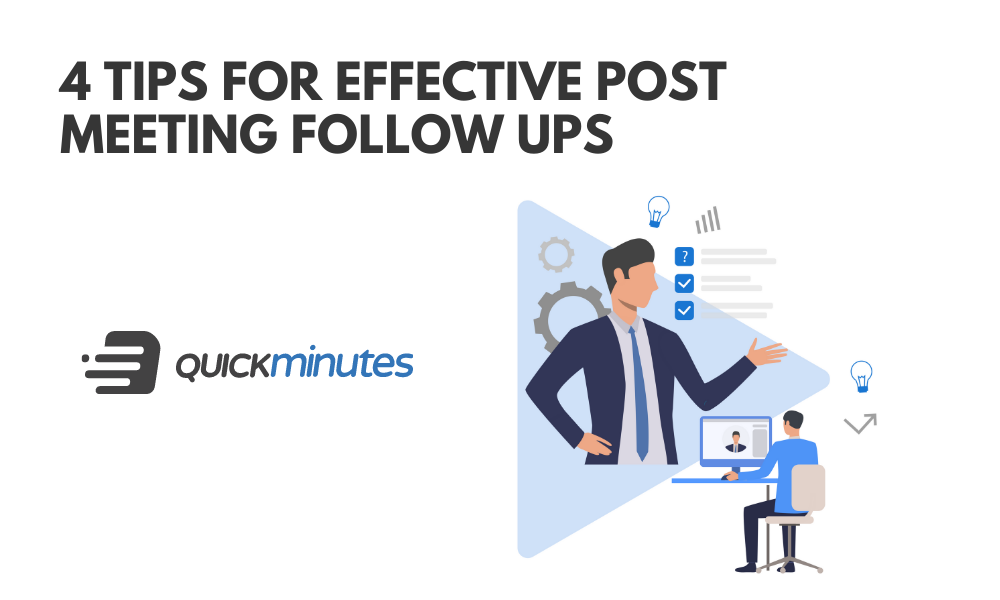
4 Tips for Effective Post Meeting Follow Ups
You've completed one meeting and are on your way to the next. When you finally get back to your work, all of the meeting information and detail seem to have flown by. The majority of the time, what is said in the meeting room gets left behind in the meeting room. Attendees may be left unclear about their responsibilities and deadlines. Or, during the week, priorities may shift. These are only some of the reasons that establishing a follow up routine becomes necessary. A lack of follow-up can result in significant time, money, talent, and energy losses. A productive meeting necessitates a follow-up.
Here are some techniques you can use to follow up and ensure that your meetings are productive and work gets done.
- Capture meeting minutes.
Priorities change, memory fades, and work comes to a standstill. To combat this, take notes during meetings that explicitly outline action items.
Write effective meeting notes, and at the end of the meeting, go through the meeting goals and outcomes. The minutes serve to remind those who attended the meeting as well as to inform those who were unable to attend. The meeting minutes should include a summary of the themes discussed, the meeting conclusions, and action items with due dates and assignees. This is the first step toward successful follow-up.
- Define action items.
Defining action items in plain and short words is the simplest way to follow up. It's possible that there will be some uncertainty regarding which decisions should be turned into action items. Additionally, some action items may not need to be completed immediately. Spend five minutes of the meeting deciding what steps need to be taken and in what order. Come to an agreement on the due dates for each action item. Due dates should be determined based on the project's needs. Do not automatically set it to the following meeting's date.
- Assign an owner for each action item.
For each action item, assign a Directly Responsible Individual, a person in charge of the task and its completion. This provides clarity and avoids one blame game. When a large number of people are needed to accomplish an action item, it is best to assign only one owner. Failure to do so may result in misunderstanding, and work and a lot of effort may go to waste.
- Assess risks involved.
When an owner has been assigned a task, put in some time in understanding the issues that might forestall its completion. This might appear to be a great deal of work, but it can assist with planning emergency courses of action and extra assets that might be expected to finish the responsibility
Conclusion
Effective follow up eliminates unproductive meetings. As you move nearer towards finishing set goals and targets, there is a sense of accomplishment and satisfaction. Follow up isn’t simply a routine. It is the key to laying out high performing teams.
Effective Meetings Meeting Tips